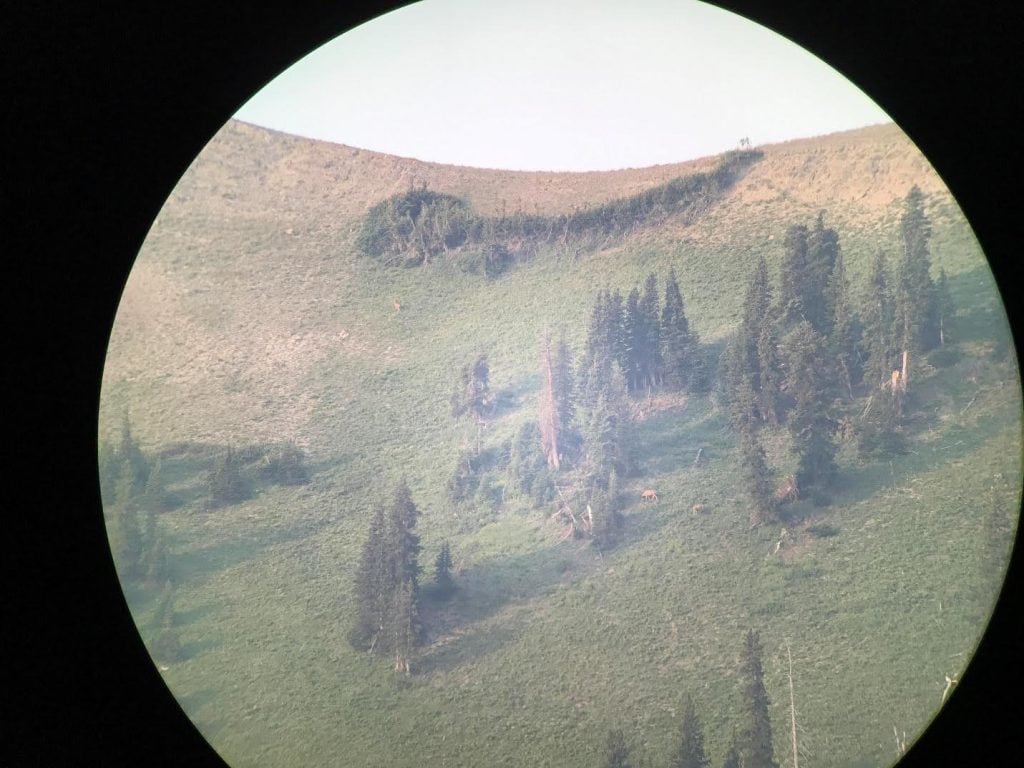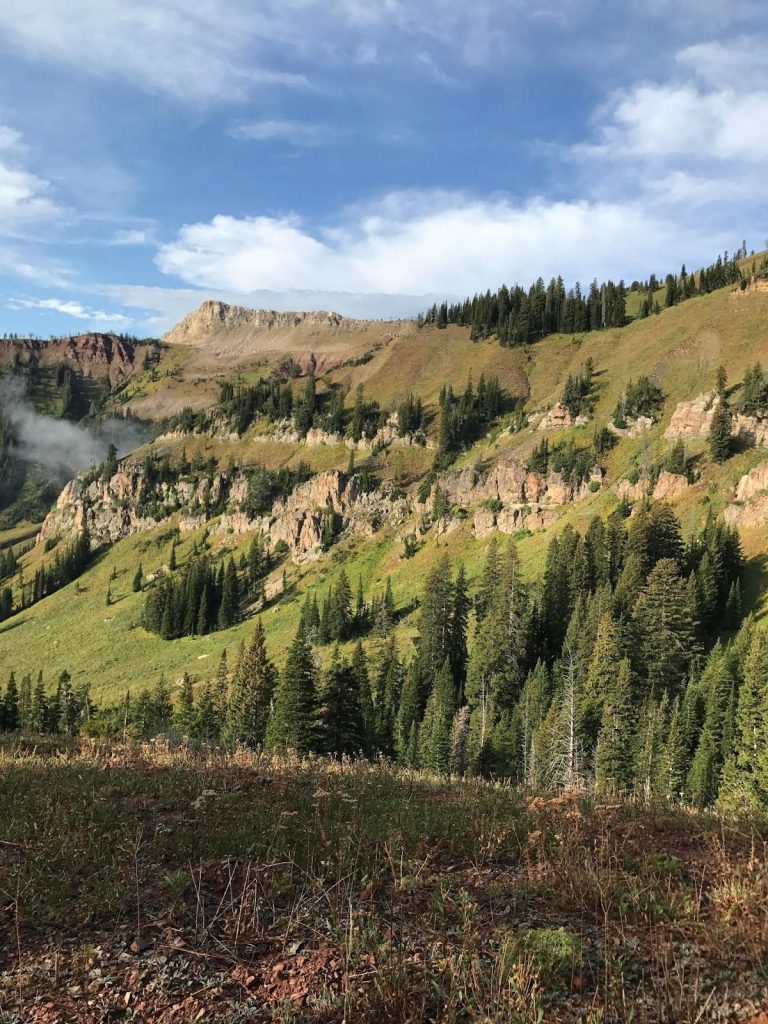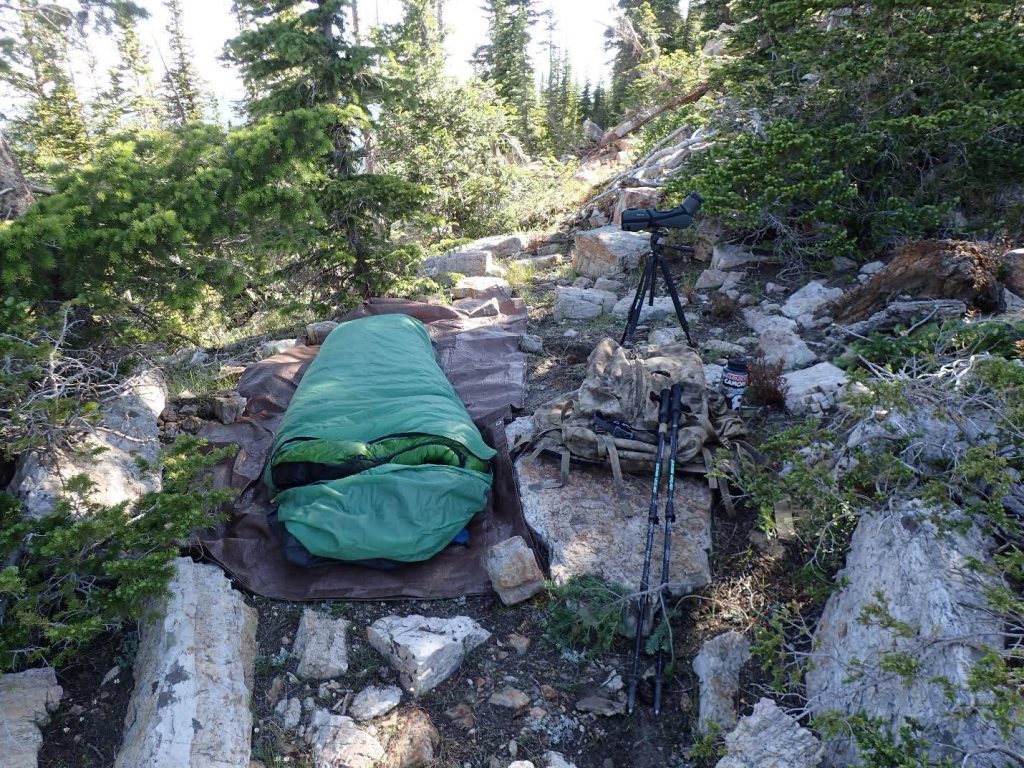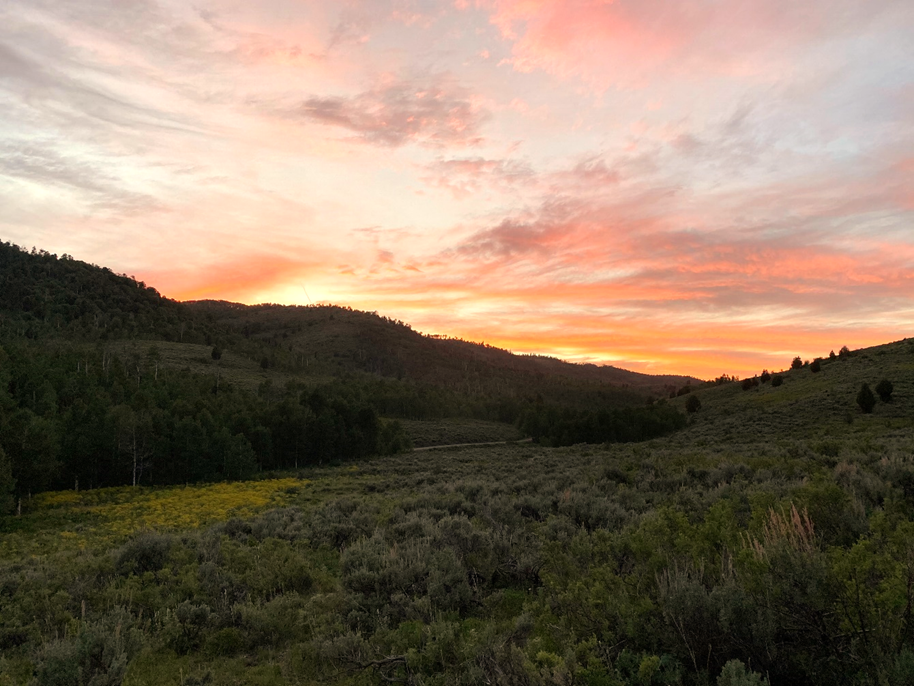The Importance of Summer Scouting for a Successful Hunting Season
By Ben Blakeley

Summer scouting is something I look forward to every year. Although I never seem to get as much time for it as I’d like, I make an effort to fit it in whenever possible. Over the past several years, I’ve noticed a strong correlation between the amount of time spent scouting and hunting success.
Some of the most successful hunters I know are public land, general unit hunters who manage to pull the proverbial ‘needle out of the haystack’ year after year. One key factor that sets these highly successful hunters apart is simply the amount of time they dedicate to being in the field.
Spending time scouting is never wasted time. You become familiar with the terrain, what animals are spending their summer months in what areas, the areas that are most attractive to wildlife (and hopefully why that area is attractive to them), escape routes, water sources (for animals and for you), bedding areas, good camping spots, and the list goes on. I don’t think there is such a thing as a wasted scouting trip, because even if you don’t see any animals, at least you figured out where the animals are most likely not spending their time, and you probably got some exercise to boot.

Why Summer Scouting Matters
Understanding Animal Behavior: Spending time scouting in the summer helps you understand the behavior and movement patterns of your target game. This knowledge is crucial for planning successful hunts.
Identifying Hot Spots: Scouting allows you to identify high-traffic areas and potential hot spots where game is likely to be found. This can significantly increase your chances of success during the hunting season.
Learning the Terrain: Familiarizing yourself with the terrain during the summer can give you a strategic advantage. Knowing the landscape helps you navigate more effectively and set up better hunting positions.
Gear Testing While Scouting

Scouting is a great opportunity for gear testing. No matter what other reviewers say, you need to get personal experience with all the gear you plan to use.
Sometimes certain sleep system configurations may seem like a great idea, but after a couple of nights in the mountains you realize that it just isn’t for you. Or maybe that ultralight tent you thought would be perfect for the high country is so noisy that if the wind is blowing you can’t sleep at night. Or maybe the brand-new boots you got that you’ve wanted forever really don’t agree with your feet like you just knew they would.
Whatever the case may be, getting experience using your own gear and familiarizing yourself with its limitations, how to troubleshoot and/or fix it when necessary, and what drawbacks it may have in different situations is all valuable information.
Proficiency with gear is very overlooked; what works best for one person may be lost or wasted on someone else who isn’t familiar with it and whose use cases are not the same. Whatever gear you end up getting, make sure you are very familiar with its proper use; it could make a world of difference if you’re ever caught in a dangerous situation.

Digital eScouting is helpful but not the sole solution
eScouting is a great tool to make use of. While boots on the ground is always best in my opinion, sometimes it isn’t an option. eScouting will give you a pretty good idea of what to expect and can really help you plan for camp spots, water sources, and potential areas to look for game in.
Just keep in mind as you eScout that if/when you physically get into the terrain, it will probably be somewhat (maybe vastly) different than what you were expecting. I’ve even noticed from time to time that what showed up in Google Maps was definitely not what I encountered in person. In the last few years, I’ve started using onX, and I really like their offline maps feature and being able to download high resolution maps. But keep in mind this isn’t always a fool-proof way to scout.
For example, I was going on a backcountry trip a few years ago and was new to onX at the time, and I started downloading some offline maps in the airport before I left service for a while. I followed their online tutorials, and it all went very smoothly. But after getting into the backcountry, when I tried to use my offline maps, they were very blurry with no detail at all; think of pulling up Google Maps when you don’t have service. At the time, they were useless to me even though I needed them. Upon return from the trip, I reached out to onX.
We corresponded via several emails, and they investigated my issue. Turns out, I had uncovered an issue with their software in a particular area of the state I’d been in that had gone unnoticed for a while. Me notifying them had enabled them to resolve the issue, and they even thanked me with a free Elite membership for the next 2 years.
Shoutout to onX. But the whole reason for the story is to convey that you shouldn’t put all your eggs in one basket, if possible. Don’t solely rely on digital scouting tools if you can help it, but rather use them as another tool in your scouting arsenal.
Tracking Animal Patterns
Another thing to keep in mind when scouting is that animals will be in different areas of their range at different times of the year. Where elk and mule deer spend the summer will likely be a different location compared to where they are come rifle season in October.
As the seasons change, so do the animal patterns. Often during hunting season, depending on the time of year and geographic location, animals may still be in or near their summer range. Other times they will have already started transitioning from summer range to lower elevations on their way to winter grounds.
Every time we go into the woods, we can learn something that pertains to scouting and hunting. Recognizing the signs that are all around us can reveal key details we may not have been aware of prior. It could be learning about where the deer like to hang out in July versus late October, or what canyons the elk like the come down from the high country to their winter grounds, or which hillsides bears seem to prefer in the spring as new vegetation starts growing, or what water sources the bighorns have been frequenting most in early summer versus late fall; there’s always something we can learn if we pay attention to the signs.
This is another reason I think there’s no such thing as a wasted scouting trip. There’s always more to learn and recognize.
One tool that I’ve found particularly useful is to have a digiscoping adapter for my phone, and I also have a Bluetooth shutter remote that I use so I don’t have to tap my phone screen. I typically take a lot of videos, and I’ll pause the video to take screenshots of certain angles I like. Taking pictures and videos of the animals gives you a record to look back on, and lets you further analyze the animals and terrain later.
Typically, phone cameras can tie location data to images, and you can look back on that later to help you keep track of what you saw and where it was. Just be careful if you share the photos as that location data will stay embedded in the image unless you remove it before sending.

Trail cameras can be a useful scouting tool. Some states have starting really cracking down on their use, regulating them to only certain times of the year. I like to use them to help give me a baseline of what’s typically in the area, but I know some people that utilize several cameras to really try and keep tabs on certain animals.
It can be really convenient if you have the kind that transmit wirelessly (you must have cell service where the camera is for this to work) as you can be aware of what’s in an area without having to go check your camera periodically. This can be very convenient, but is also situational, as there’s still plenty of area in the woods where you don’t get any service (thankfully!). Trail cameras definitely can be helpful and are fun to check, just don’t rely on them to do all the scouting for you.

Scouting Summary
No matter what you do or how you approach your summer scouting, have a plan. Figuring out where to go once you park and are about to start hiking is inefficient, especially if you aren’t familiar with the terrain. Prioritize locations and mark them on your phone.
Do some e-scouting ahead of time. Go through which locations you want to check out and when. Make a plan for how long you think it will take to move in between locations and add some time onto that estimate; distances in the mountains are always further than they appear. Whatever your situation may be and how much time you have, try to maximize your time by planning ahead. Enjoy the process and have fun!
